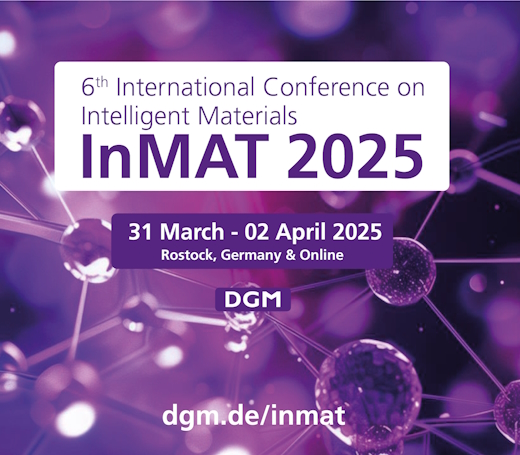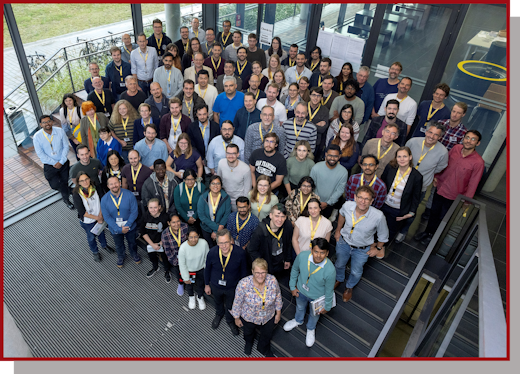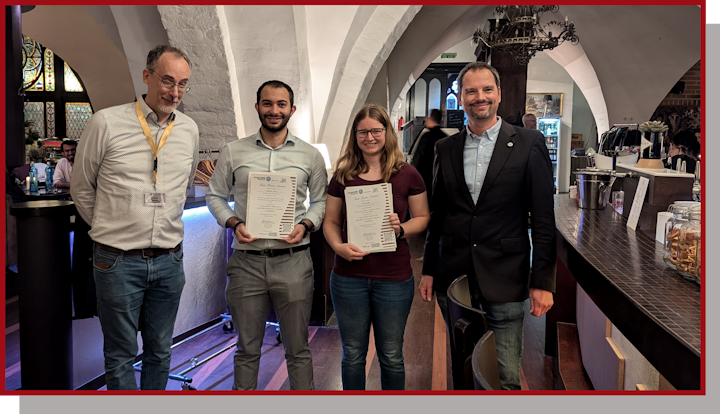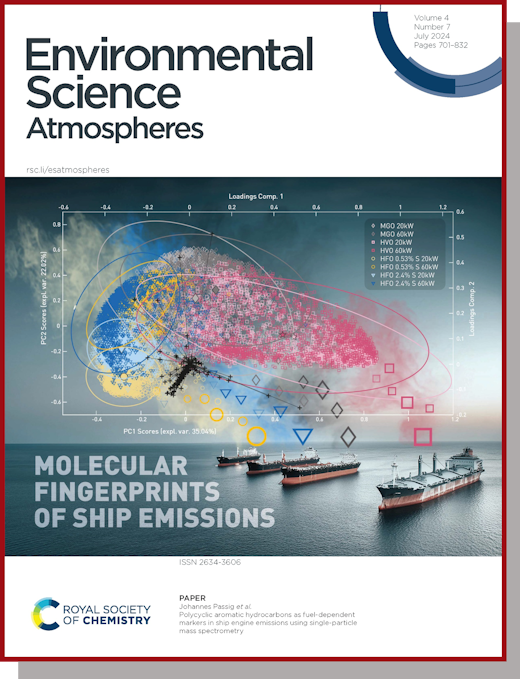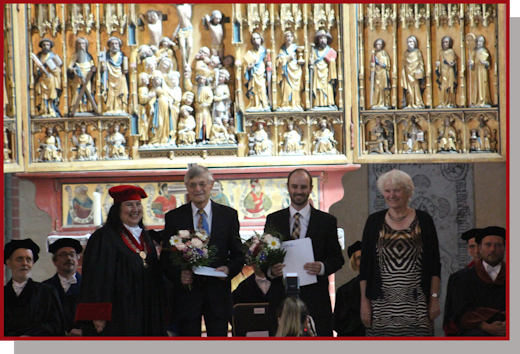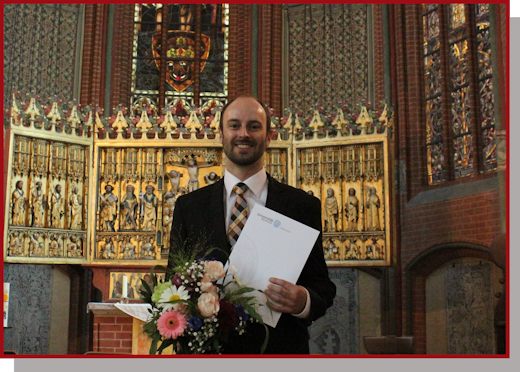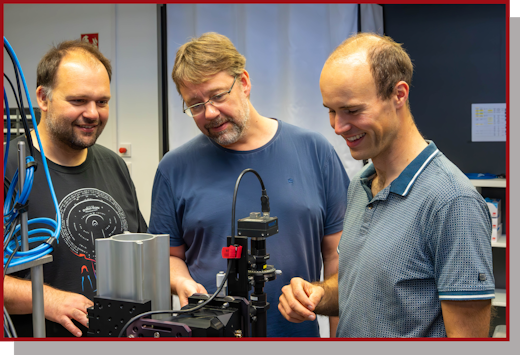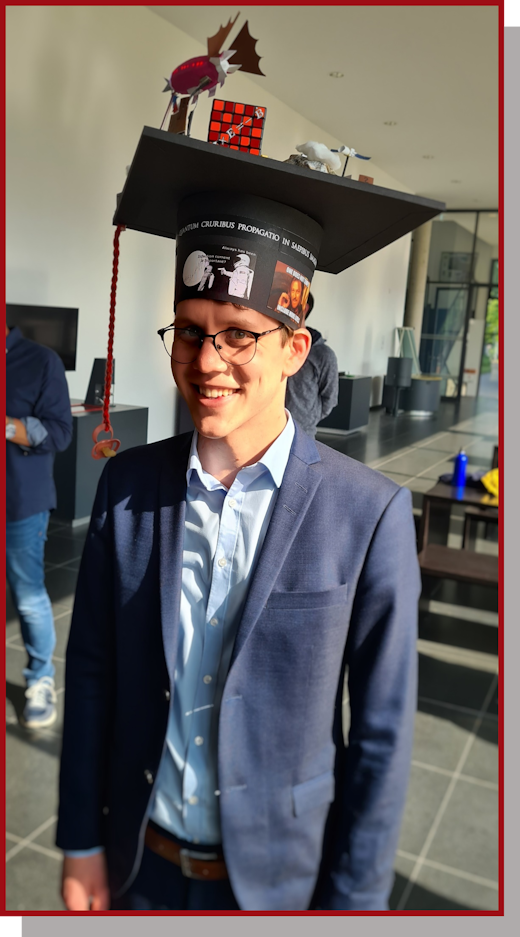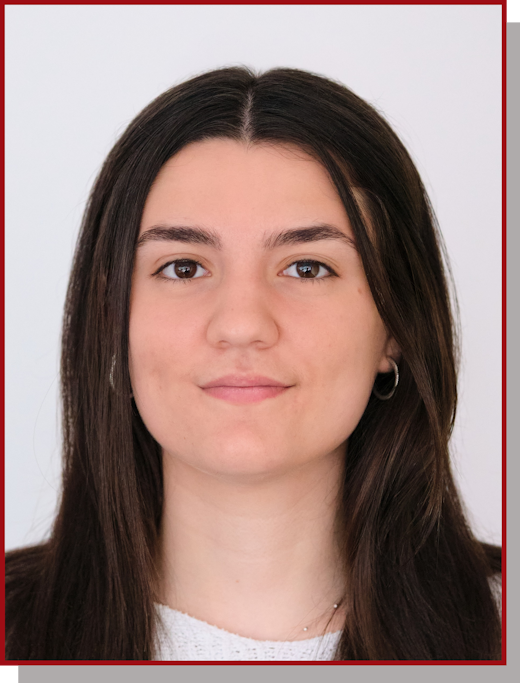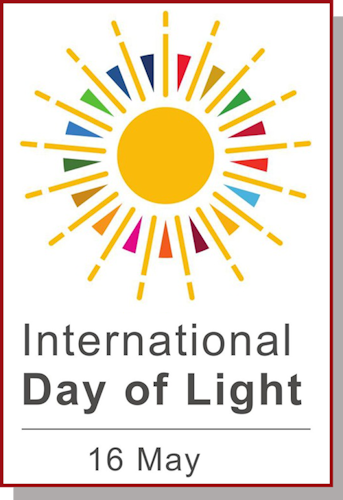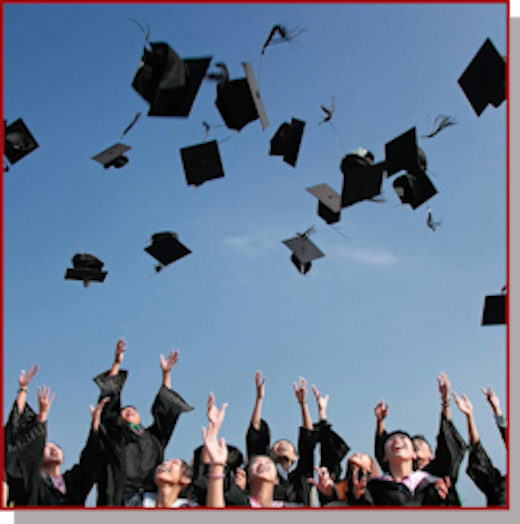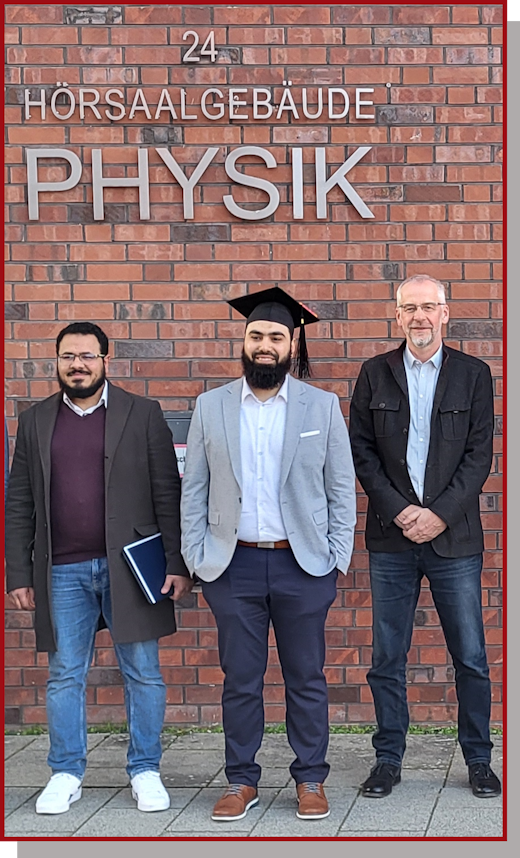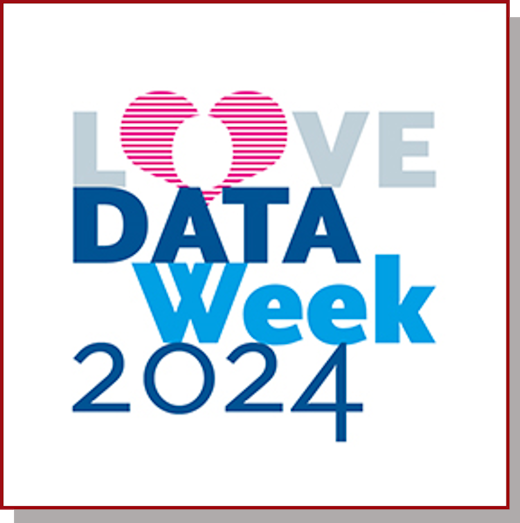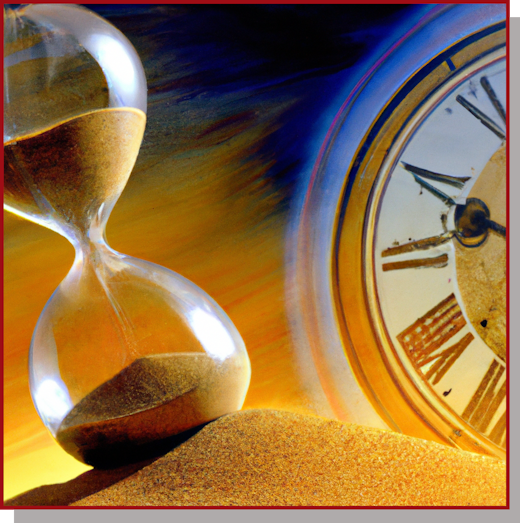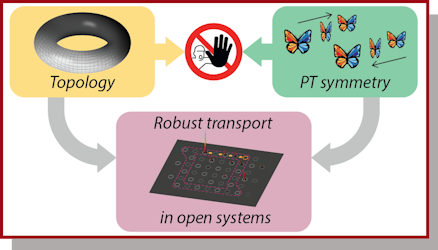| 2024 |
|---|
08.11.2024
Announcement: 6. internat. Conference Networked Matter: Intelligent Materials
The CRC LiMati is co-organizer of InMAT 2025 - Networked Matter: Intelligent Materials, which makes this event particularly relevant for some of our physicists and materials scientists.
The conference, which will take place from March 31 to April 2, 2025 in Rostock and online, will present interdisciplinary findings on intelligent materials. With talks, poster sessions and networking, it promises a dynamic exchange of ideas.
Further information can be found at InMAT 2025.
23.10.2024
Ultrafast Interaction of Light and Matter – Around 150 International Researchers Discussed Latest Findings at the Institute of Physics
From September 23 to 27, 2024, the Institute of Physics at the University of Rostock hosted the first international conference "Light-Matter Interactions at Interfaces." This event was part of the Collaborative Research Center 1477 (SFB1477), which has been funded by the German Research Foundation with nearly 10 million euros since 2022.
"The conference offered around 150 international researchers a valuable platform to present and discuss the latest findings, as well as exchange new ideas for future research collaborations," explained Prof. Dieter Bauer, spokesperson for the SFB "Light-Matter Interactions at Interfaces," also known as LiMatI.
The focus of the conference was on recent discoveries regarding light-matter interactions at interfaces, which form the basis for new technologies in areas such as ultrafast electronics, structural determination, sensing technologies, radiation sources, magnetism, and quantum information, according to co-organizer Prof. Thomas Fennel.
A highlight of the event was the presentation of the poster award to two young researchers. The award, sponsored by Wiley, recognized outstanding research results and their presentation, emphasized Dr. Margit Schwartz, the coordinator of LiMatI.
The SFB1477 team was very pleased with the positive feedback from participants, who praised the high quality and relevance of the lectures as well as the valuable networking opportunities. The strong response highlights Rostock's role as a hub for cutting-edge research in this field, noted both Prof. Bauer and Prof. Fennel. The SFB1477 team is motivated to continue its work and develop an ongoing series of conferences, while aiming for additional funding phases.
More impressions of the event can be found on the event page.
11.07.2024
Light-matter interactions and the analysis of ship emissions
A research team involving the University of Rostock and researchers from the SFB 1477 LiMatI has developed an innovative method to identify ship fuels from several kilometers away by analyzing polycyclic aromatic hydrocarbons (PAHs) in the air.
This technique enables a new form of monitoring and attribution of air pollution sources in the maritime sector. Polycyclic aromatic hydrocarbons (PAHs) are not only dangerous and carcinogenic environmental toxins but also possess special optical properties. PAHs can be particularly efficiently excited and ionized with laser light, for example, at the interfaces of the smallest air pollutant particles. At the University of Rostock, newly developed methods of single particle mass spectrometry (SPMS) utilize these resonant light-matter interactions to analyze the chemical composition of the particles. Their particularly high sensitivity and selectivity enable the identification of specific PAHs that can serve as markers for the combustion of various fuels. The study shows that the PAH patterns in the exhaust gases vary depending on the fuel used. Various relevant ship fuels such as marine gas oil, hydrogenated vegetable oil, and heavy fuel oil were examined. The PAH patterns allow a clear distinction between the different fuels. It is noteworthy that cheap heavy fuel oil is no longer permitted in most coastal sea areas as well as in the North and Baltic Seas to protect the environment and human health. This method thus offers a new possibility to monitor compliance with emission regulations from several kilometers away from land-based stations and to identify the source of air pollutants. Consequently, it can make an important contribution to the protection of the environment and human health in the future.
Original Publication: Johannes Passig et al., Polycyclic aromatic hydrocarbons as fuel-dependent markers in ship engine emissions using single-particle mass spectrometry, Environ. Sci.: Atmos.,2024,4, 708, DOI: 10.1039/D4EA00035H
05.07.2024
LiMatI Postdok Dr. Lennart Seiffert receives teaching award
Two educators from the University of Rostock, Professor Dana-Sophia Valentiner (Faculty of Law) and Dr. Lennart Seiffert (Institute of Physics), received the Teaching Award on July 5, 2024, endowed with 3,000 euros.
Junior Professor Valentiner was nominated for her interactive teaching methods and the organization of guest lectures. The award ceremony took place in the University Church of Rostock, as part of the Academic Celebration, where the Joachim Jungius Promotion Awards, Teaching Awards, and the doctoral and habilitation certificates were also presented. Additionally, Professor Krüger, former Professor of Modern History, was honored for his long-standing commitment to teaching, which he continued even after his retirement.
Dr. Lennart Seiffert, a member of the Strong Field Nanophysics research group and postdoc in SFB 1477 LiMatI, has made a name for himself through his outstanding engagement in his excellent lectures on theoretical physics. He excels at conveying complex physical concepts in an understandable manner. Students particularly highlight the apps developed by Dr. Seiffert, which support and facilitate the learning process.
The SFB LiMatI congratulates him on this honor!
24.06.2024
Photon pairs interfere with a twist
A collaboration of Professor Szameit's research group at the University of Rostock with researchers from the Albert-Ludwigs-Universität Freiburg has succeeded in stabilizing the interference of two photons in optical chips with the concept of topologically protected wave propagation. The research results were published in the renowned journal Science.
Scientific innovation often arises as synthesis from seemingly unrelated concepts. For instance, the reciprocity of electricity and magnetism paved the way towards Maxwell’s theory of light, which, up until now, is continually being refined and extended with ideas from quantum mechanics.
In a similar vein, the research group of professor Alexander Szameit at the University of Rostock explores light evolution in optical waveguide circuits in the presence of topology. This abstract mathematical concept was initially developed to classify solid geometries according to their global properties. Szameit explains: “In topological systems, light only follows the global characteristics of the waveguide system. Local perturbations to the waveguides such as defects, vacancies and disorder cannot divert its path.”
In 1987, the physicists Hong, Ou and Mandel observed the behaviour of photon pairs in a beam splitter in an experiment that until recently had been independent of topology. They discovered that a photon, which interferes with itself due to its behavior as an electromagnetic wave, is also able to form interference patterns together with other light particles. In addition to entanglement as further fundamental feature of quantum light particles, this groundbreaking discovery has proven to be an instrumental ingredient for new optical quantum technologies, including quantum computers.
In a joint effort with colleagues from the Albert-Ludwigs-Universität Freiburg, the researchers have accomplished to combine topologically robust propagation of light with the interference of photon pairs. "This result is truly a milestone," says Szameit, who has been searching for such a connection for a long time. Max Ehrhardt, doctoral candidate and first author of the work, continues: "Quantum technologies struggle with ever-increasing complexity. Hence, topological protection of optical elements is a much-needed design tool to ensure proper operation regardless of the finite manufacturing tolerances of the optical elements." The physicists attribute the observed peculiar behavior to the quantum nature of light: "Pairs of photons that see each other perceive the waveguide structure as twisted. This causes them to link up, as if they were dancing along the twisted dance floor as a couple. Photons that pass through the waveguide separately only experience a conventional flat surface. So, we have a topological difference", continues Ehrhardt to explain the mechanism. "We were amazed just how far we could deform our waveguide system without any impact on quantum interference," summarizes the group’s senior scientist Dr. Matthias Heinrich, these fascinating measurements.
Szameit already thinks of further perspectives to be investigated by his team: "Our waveguide systems provide a rich pool of possibilities for constructing topological systems for light. The symbiosis with quantum light is just the beginning."
This research was funded by the German Research Foundation, the Euopean Union, and the Krupp von Bohlen and Halbach Foundation.
Original publication: Ehrhardt et al., „Topological Hong-Ou-Mandel interference“, Science 384, 1340-1344 (2024).
17.06.2024
Congratulations to the doctorate!
In May 2024, Mr. Björn Kruse, M.Sc. successfully defended his dissertation.
His dissertation project on quantum effects in coherent diffractive imaging is closely linked to research in the field of strong-field physics within our Collaborative Research Center.
Congratulations to him!
10.06.2024
Undergraduate student starts CRC-funded RISE Germany internship
We are delighted to welcome Aina Lopez Benet at the Institute for Physics for an internship within the RISE Germany project by the Deutscher Akademischer Austauschdienst (DAAD).
Aina is majoring in physics in her undergraduate studies at the University of Minnesota - Twin Cities. After a competitive application process, she was selected to join the Quantum Technology group led by Prof. Dr. Friedemann Reinhard. During her three-month internship, she will be supervised by Paul Weinbrenner, a doctoral candidate in Prof. Reinhard's group.
Her project aims to study the fluorescence emission pattern of nitrogen-vacancy (NV) centers in diamond and devise beam shaping methods to improve the light collection efficiency. This work will not only probe a major unsolved question of optics at interfaces, but could also lead to more efficient readout and higher sensitivity of NV quantum sensors and other solid-state single-photon emitters for quantum technologies.
The internship is supported by a collaborative scholarship from the DAAD RISE Germany project and the CRC LiMatI.
01.05.2024
Announcement: Day of Light, 16.05.2024
Scientists and artists turn on the light and illuminate different disciplines of our society.
The International Day of Light is a global initiative that aims to create an annual focus for the appreciation of light and its role in science, culture and the arts, education and sustainable development. The unifying theme of light will enable many different sectors of our society worldwide to participate in activities that demonstrate how science, technology, art and culture can contribute to achieving UNESCO's goals of education, equality and peace.
The Institute of Physics is taking part in the Day of Light initiative for the fourth time after 2018, 2021 and 2022 and, together with the Collaborative Research Center 1477 LiMatI, the International Research Training Group IRTG 2676 IQS and in cooperation with the KVLAB of the Kunstverein zu Rostock, would like to set a strong point of light in our university and its location in Rostock in 2024. To mark the occasion, artistic works by Lars Heidemann, Marc W1353L and Tino Bittner will be presented at the institute on May 16 as part of the colloquium, forging a link between art and science.
The Day of Light represents a starting point for artistic and scientific dialog on the subject of light. In addition to the artistic positions visible in the outdoor area of the Institute of Physics and the Botanical Garden, the contributions are permanently presented on a website of the KVLAB of the Kunstverein zu Rostock. These contributions also include recorded discussions between scientists, artists and mediators from art and science, which have accompanied and shaped this project from the very beginning.
This initiative already has a firm place in the annual schedule of the Institute of Physics and will continue to develop interdisciplinary approaches in line with UNESCO's goals at our university next year with a series of events throughout the year to mark the International Year of Quantum Science and Technology.
Programm
16 Uhr: Colloquium
Institute of Physics/ Great Lecture Hall
Moderation: Prof. Dr. Alexander Szameit (Geschäftsführender Direktor, Institut für Physik, Universität Rostock)
Lectures on art and science
Artists
Tino Bittner, Lars Heidemann, Marc W1353L
Dr. Gerd Mathias Micheluzzi, Art History Seminar University of Hamburg
18.30 Uhr: „Flashing Lights“
Short contributions on light and science
Institute of Physics/ Research Building
Moderation: Prof. Dr. Stefan Scheel
Contacts:
Universität Rostock
Prof. Dr. Alexander Szameit
Managing Director
Institute of Physics
Albert-Einstein-Str. 23-24
18059 Rostock
Fon: 0381-498 6790
alexander.szameituni-rostockde
Kunstervein zu Rostock
Thomas Häntzschel/ Matthias Dettmann
Kunstverein zu Rostock
Amberg 13
18055 Rostock
Fon: 0381 - 4591222
infokunstverein-rostockde
Press
Wiebke Loseries
Institute of Physics
Albert-Einstein-Str. 23-24
18059 Rostock
Fon: 0381-498 6755
wiebke.loseriesuni-rostockde
26.04.2024
Announcement: Information event for physics graduates
What comes after graduating in physics?
We all have to ask ourselves this question sooner or later. At the career info afternoon, you will find out how to go about looking for a job and what experience physicists have gained in the fields of medical physics, project management, science, consulting and artificial intelligence. There are also many regional companies.
Gather ideas, ask your questions and benefit from the experience of your alumni.
The event is organized by your graduate college, consisting of representatives of the institute, the SFB1477 LiMatI and the IRTG 2676 IQS.
We are looking forward to seeing you!
When: Saturday, 04.05.2024 12:00-19:00
Where: Institute of Physics, lecture hall building
15.03.2024
LiMatI PhD student completes doctorate and starts postdoc career
We are thrilled to announce an important milestone of our colleague Moyassar Meshhal, who has now officially obtained a PhD in theoretical physics!
His research journey took him into the fascinating field of computer simulations of 2D materials. His PhD topic was exploring potential environmental applications of 2D materials using atomistic computational simulations. "I am grateful for the journey so far and look forward to the scientific discoveries to come!" said Moyassar Meshhal following his defense on 07.03.2024.
The next step on his career path is a stay here at the Institute of Physics as a postdoctoral researcher in Prof. Redmer's group. Here he will work on simulations of warm dense matter to study elements under extreme conditions.
Moyassar Meshhal would like to thank the supervisors of his doctoral project, Prof. Dr. Oliver Kühn and Dr. Ashour Ahmed, for their support and for everything he has learned from them.
The SFB LiMatI wishes Moyassar Meshhal every success and all the best for his upcoming postdoc adventure.

13.03.2024
Dr. Hannah Jürß strengthens INF team in CRC LiMatI
The CRC LiMatI is very pleased to announce the integration of Dr. Hannah Jürß as a postdoctoral researcher in the INF project, which will be an enriching addition to the dynamic INF team.
In her role, Dr. Jürß will act as a crucial link between the INF project and the research groups at LiMatI. She will have a significant impact on the project through her tireless efforts to optimize the daily workflows of our researchers. Her main focus will be on providing comprehensive support for various aspects of data management, which strongly emphasizes our commitment to research excellence.
Dr. Jürß recently completed her PhD under the supervision of Prof. Dieter Bauer in the Department of Physics. Her dissertation focused on the generation of high harmonics in topological haldanite systems, which underlines her deep understanding of physics. With her wealth of expertise, Dr. Jürß will be a competent advocate for the goals of the INF project.
The wait has undoubtedly been worth it, and we now warmly welcome Dr. Jürß to her new role in the CRC LiMatI.
01.02.2024
Online lecture series on the international LoveDataWeek 2024
Love Data Week (LDW) is a global week of action focused on research data and research data management.
With the theme "My Kind of Data", the worldwide love of data will be celebrated through a variety of events from February 12 to 16, 2024.
The FDM initiatives in German-speaking countries are aiming to generate more attention for research data management through various events and formats during Love Data Week.
Topic highlights
- What is research data management?
- Research data management in the humanities and applications
- Version management with Git
- Ways to publish research data
The event will take place via Zoom.
26.01.2024
Leap Year Colloquium 2024
2024 is the 506th leap year since the introduction of the Gregorian calendar in 1582.
For 73 years now, the Institute of Physics has been honoring such a year with a special colloquium, for which contributions can still be submitted until 08.02.2024.
When: Thursday, 29.02.2024 3:00 pm
Where: Lecture Halll 1, Institute of Physics
FAQ: What is a leap year?
A leap year is a year that contains an extra day to bring the calendar in line with astronomical time. A regular year has 365 days, but the actual time it takes the Earth to orbit the Sun (a so-called tropical year) is about 365.2422 days. To compensate for this discrepancy, we add an extra day every four years. This corrects the calendar and brings it closer to astronomical reality. If we did not do this, the seasons would shift over time and our calendar would no longer match the seasonal phenomena.
To find out whether a particular year is a leap year, we can apply the leap year rule:
- A year that is divisible by 4 is a leap year.
- Exception: A year that is divisible by 100 is not a leap year unless it is also divisible by 400.
19.01.2024
Staying the course despite rough seas – Protecting light beams from gain and loss.
An international cooperation of physicists from the University of Rostock, the cluster of excellence ct.qmat, the Julius Maximilians University of Würzburg and the Indiana University Indianapolis (IUPUI) have demonstrated for the first time that robust and stable propagation of light is possible in systems interacting with their environment. Previously, it was thought that such open systems inevitably would exhibit amplification or damping. Their findings have recently been published in the renowned journal Nature Materials.
Whether describing the orbits of planets or the inner workings of the atom, a key paradigm in physics is the conservation of energy: While different forms of energy may be converted into one another, the total amount of energy is typically assumed to be constant over time. Along these lines, physicists tend to go through great lengths to ensure that the system they are trying to describe does not interact with its environment. Yet, as it turns out, the dynamics of a system can also be stable if the gain and loss of energy are distributed in a systematic fashion such that they cancel each other under all conceivable conditions, which can be ensured by so-called parity-time (PT) symmetry: When simultaneously exchanging gain and loss, and mirroring the geometric arrangement of its components, the system appears unchanged. Far from being a purely academic notion, PT symmetry has paved the way for a deeper understanding of open systems.
The fascinating physical phenomena associated with PT symmetry are the specialty of Prof. Alexander Szameit at the University of Rostock. His research group harnesses laser-inscribed photonic waveguides as “circuits for light” to explore the dynamics of discrete systems. In their custom photonic chips, laser light can mimic the behavior of natural and synthetic materials alike, making them an ideal testbed for a large variety of physical theories. In this vein, the scientists around Prof. Szameit managed to combine PT symmetry with the concept of topology. Szameit explains: “Topological insulators have attracted a lot of attention in the last years because of their fascinating ability to convey a lossless stream of electrons or light along their boundary. The unique capability to suppress the impact of defects and scattering makes them especially interesting for all kinds of technological applications.”
Yet, until now, such robust boundary states were thought to be fundamentally incompatible with open systems. In their joint effort, the researchers from Rostock, Würzburg and Indianapolis could show that apparent paradox can be resolved by distributing gain and loss dynamically in time. The first author, PhD student Alexander Fritzsche elaborates: “The light propagating along the boundary of our open system is like a hiker traversing mountainous terrain. Despite all ups and downs, they will inevitably end up back at the initial elevation. Similarly, the light propagating within the protected edge channel of our PT-symmetric topological insulator will never be exclusively amplified or damped, and can therefore retain its amplitude on average while enjoying the full robustness afforded by topology.”
These findings constitute an important contribution to the fundamental understanding of topological insulators and open systems, and may open the gates to a new generation of advanced circuits for electricity, light or even sound waves.
This research was funded by the German Research Foundation (DFG) and supported by the Alfried Krupp von Bohlen und Halbach Foundation.
Original Publication: Fritzsche et al., „Parity-Time-symmetric Photonic Topological Insulator”, Nature Materials (2024). DOI: 10.1038/s41563-023-01773-0
Contakt:
Prof. Dr. Alexander Szameit
Solid-State Optics Group
Institute of Physics
University of Rostock
Phone.: +49 381 498-6790
E-Mail: alexander.szameituni-rostockde

01.01.2024
CALL FOR NOMINATIONS
The 20th IUPAP Prize for Young Scientists in Atomic, Molecular and Optical Physics 2024 includes a certificate, a medal, an award of 1,000 euros and an invited presentation at ICAP 2024.
The deadline for submitting nominations is March 31, 2024.

